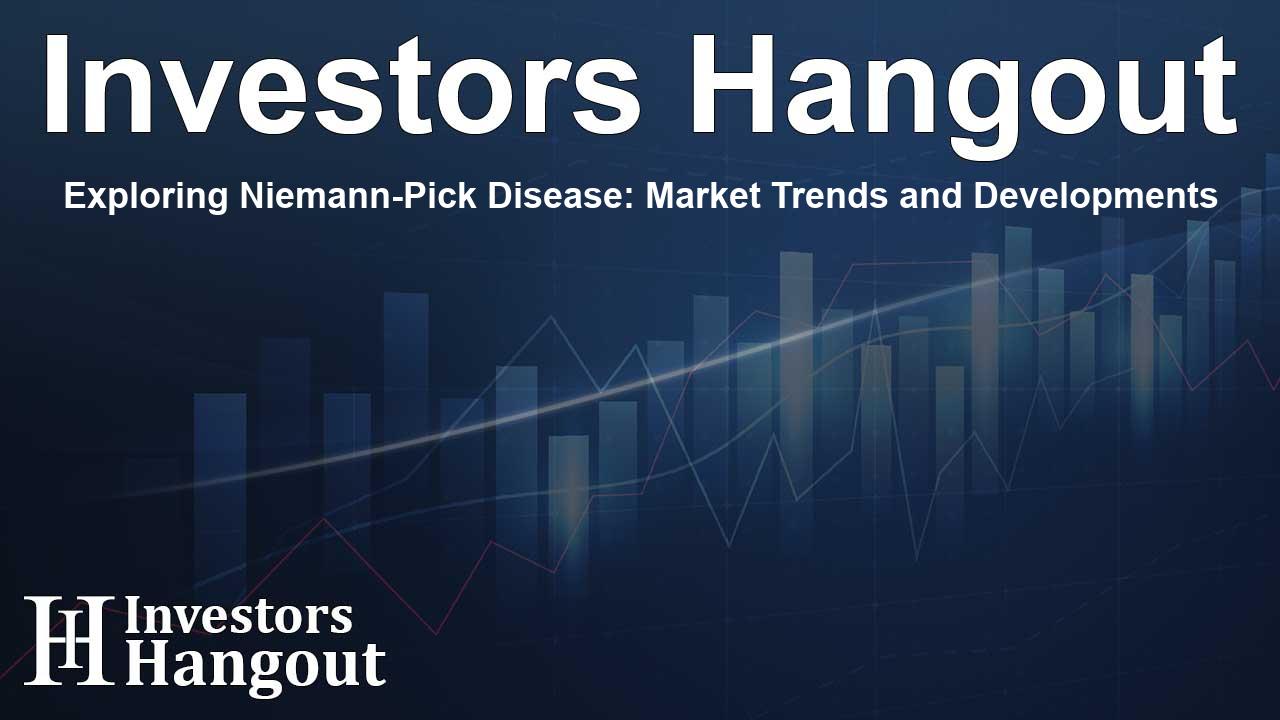Exploring Niemann-Pick Disease: Market Trends and Developments

Understanding Niemann-Pick Disease
Niemann-Pick disease represents a group of serious genetic disorders linked to the breakdown of lipids within cells. This condition causes an alarming accumulation of sphingomyelin and other lipids due to a deficiency in the enzyme acid sphingomyelinase (ASMD). As these substances build up, they disrupt normal cellular functions, leading to significant health complications like liver and spleen enlargement, respiratory issues, and neurological deficits.
Market Trends and Insights
Recent analyses indicate that the Niemann-Pick disease market is poised for growth in the coming years. This anticipated increase is primarily driven by the development and launch of innovative therapies, as well as a rise in healthcare investments across the globe. From statins to cutting-edge treatments involving alternatives like miglustat and cyclodextrin, the therapeutic landscape has evolved considerably. Presently, management strategies are focused on alleviating symptoms through various supportive therapies, including physical and speech therapy.
Types of Niemann-Pick Disease
Niemann-Pick disease is categorized into four main types: A, B, C, and E. Inherited through an autosomal recessive pattern, both parental gene copies must harbor mutations for the disease to manifest. Unfortunately, there are currently no definitive cures for these types. While therapies dedicated to symptoms exist, such as seizure management and motor therapy, the quest for targeted treatments continues unabated.
Niemann-Pick Disease Types A and B
Focusing on the A and B variants—both of which arise from mutations in the SMPD1 gene—these disorders are forms of acid sphingomyelinase deficiency. The result of these mutations severely impairs the body's ability to function, as sphingomyelin accumulation wreaks havoc on cellular health. Fortunately, greater public awareness and improved screening methods are aiding in earlier diagnosis and intervention.
Currently, treatment options are scarce, particularly for type A. Most affected individuals face a grim prognosis, with severe neurological decline often resulting in early mortality. Type B presents slightly better outcomes, with efforts like blood and bone marrow transplants being employed, though results have varied. New categories of therapies including enzyme replacement therapy (ERT) and gene therapy show hope for improving outcomes, particularly for type B patients, by tackling the underlying root of the disease.
Recent Advances in Treatment
One key development includes the FDA's approval of XENPOZYME (olipudase alfa-rpcp), which marks a significant step forward. As the first specific treatment aimed at non-CNS manifestations of Niemann-Pick disease, this therapy provides the missing acid sphingomyelinase enzyme, essential for managing lipid buildup and preventing organ damage. Clinical studies indicate that patients of all ages have benefited from this treatment, making it a cornerstone for future application in Niemann-Pick management.
Niemann-Pick Disease Type C
Niemann-Pick disease type C (NPC) represents another challenge, characterized by improper lipid transport in cells. As the most common variant, it draws critical resources for research and management. Here, a multidisciplinary approach is vital. Specialists from various fields collaborate to offer holistic care, addressing the myriad symptoms that emerge from this complex disease.
Current Treatments in NPC
Symptom management in NPC remains complex. Approved treatments like AQNEURSA (levacetylleucine) and MIPLYFFA (arimoclomol) specifically target neurological symptoms, showcasing the promising evolution of drug options. MIPLYFFA's recent FDA approval has marked a milestone as the first oral treatment for NPC. It works best alongside traditional therapies like miglustat and is being observed in new studies focusing on pediatric populations.
The Future Landscape of Niemann-Pick Disease Care
Moving forward, ongoing research and awareness initiatives are expected to spark further innovation in the Niemann-Pick disease landscape. Companies are exploring new treatments, and advancements in gene therapy and specific disease-targeting drugs herald a future where quality of life may significantly improve for patients. With the integration of new therapies and increased healthcare spending, the approach to Niemann-Pick disease management is on the brink of a transformation.
Frequently Asked Questions
What is Niemann-Pick disease?
Niemann-Pick disease is a genetic disorder involving lipid storage, caused by a deficiency of the enzyme acid sphingomyelinase.
How many types of Niemann-Pick disease are there?
There are four main types: A, B, C, and E, each with varying symptoms and severity.
What are the treatment options for Niemann-Pick disease?
Currently, there is no cure, but treatments focus on managing symptoms, with options like enzyme replacement therapy showing promise.
What has changed in managing Niemann-Pick disease recently?
Recent approvals of treatments like XENPOZYME and MIPLYFFA herald new hopes in effective management, addressing symptoms more efficiently.
What does the future hold for Niemann-Pick disease therapies?
With ongoing research and development, future therapies may significantly enhance patient outcomes and redefine care strategies.
About The Author
Contact Dominic Sanders privately here. Or send an email with ATTN: Dominic Sanders as the subject to contact@investorshangout.com.
About Investors Hangout
Investors Hangout is a leading online stock forum for financial discussion and learning, offering a wide range of free tools and resources. It draws in traders of all levels, who exchange market knowledge, investigate trading tactics, and keep an eye on industry developments in real time. Featuring financial articles, stock message boards, quotes, charts, company profiles, and live news updates. Through cooperative learning and a wealth of informational resources, it helps users from novices creating their first portfolios to experts honing their techniques. Join Investors Hangout today: https://investorshangout.com/
The content of this article is based on factual, publicly available information and does not represent legal, financial, or investment advice. Investors Hangout does not offer financial advice, and the author is not a licensed financial advisor. Consult a qualified advisor before making any financial or investment decisions based on this article. This article should not be considered advice to purchase, sell, or hold any securities or other investments. If any of the material provided here is inaccurate, please contact us for corrections.
